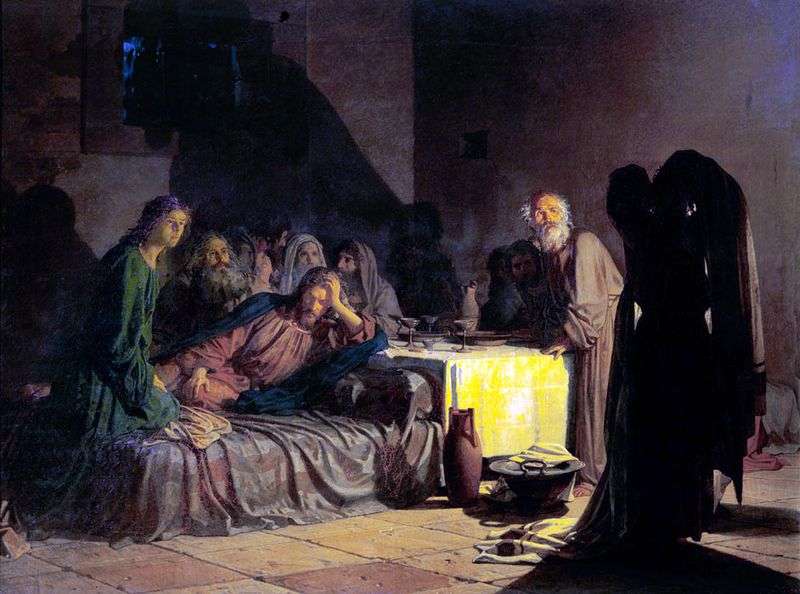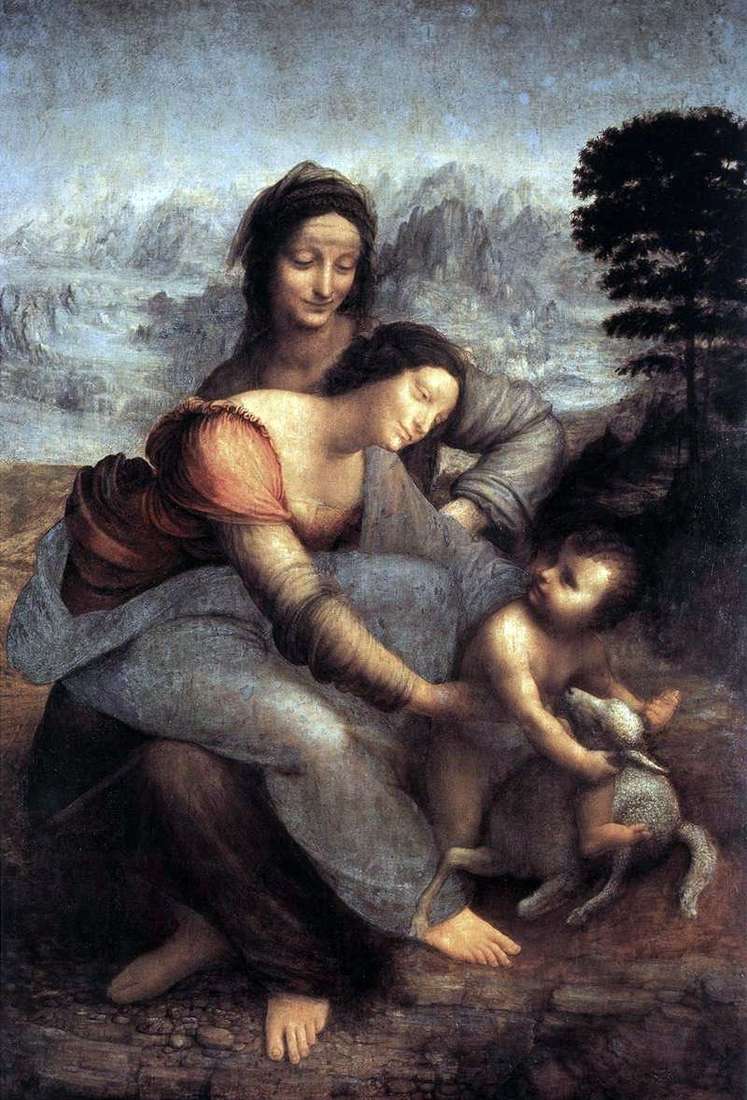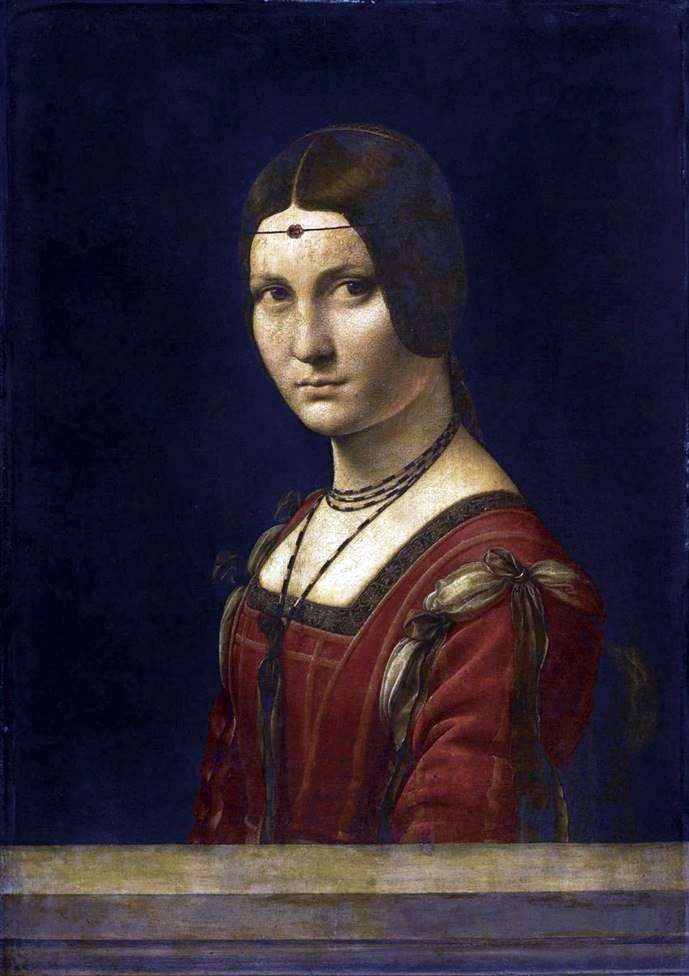
In one of the quietest corners of Milan, lost in lace narrow streets, stands the church of Santa Maria della Grazie. Next to it, in a nondescript building, the refectory, for more than 500 years, is a masterpiece of masterpieces – the fresco “The Last Supper” by Leonardo da Vinci. This composition was written by Leonardo da Vinci commissioned by the Duke of Milan, Ludovico il Moro ruler after the death of his wife, Beatrice.
For his mural on the wall of the refectory of Santa Maria delle Grazie da Vinci I chose the moment when Christ said to his disciples: “Truly I say to you – one of you will betray me.” “One of you will betray me.” – and the icy breath of the inevitable fate has touched each of the apostles. After these words on their faces expressed a variety of feelings: some were impressed, others are outraged, others grieve.
Young Philip, ready to samopozhertvovan uw, leaned towards Christ, in the tragic loss spread his hands, Jacob, is about ready to throw a traitor grabbed the knife, Peter, Judas right hand squeezes a purse with pieces of silver fatal. For the first time in painting complex range of feelings is found deep and subtle reflection. Everything in this amazing mural made with truth and care, even the folds on the tablecloth covering the table, look real. Leonardo compositions all figures are in line – facing the viewer. Christ is depicted without a halo, the apostles, without their attributes.
“The Last Supper” – one of the great works of Leonardo. Anyone who has seen this fresco in our time, feels a sense of inexpressible grief of the type of those terrible losses, which caused masterpiece of relentless time and human barbarity. Meanwhile, as long as the inspired work, and the most ardent love put Leonardo da Vinci in the creation of his work! It is said that one could often see him suddenly dropped everything, ran among the strongest of the day in the heat of the Church of St. Mary, to spend one single line or improve th circuit in the “Last Supper.” He was so passionate about his work that he wrote constantly, from morning till night, forgetting about food and drink.
Sometimes, however, that for several days he did not took up a brush, but in these days it is two to three hours remained in the refectory, meditating and looking at pre-written pieces. All this is very annoying, that “it seemed strange to the prior of the monastery of the Dominicans, that Leonardo a good half of the day is lost in thought and contemplation. He wanted the artist did not let the hands, just as not stop working in the garden. The abbot complained to the Duke, but he listened to Leonardo, he said that the artist is a thousand times right.
Leonardo carefully chosen models for the apostles of images. Every day he went to those districts in Milan, which was inhabited by the lower strata of society and even criminal people. There, he was looking for a model for Judas’ face, whom he regarded as the greatest scoundrel in the world. In restaurants, he sat down at the table together with the poor and tell them stories – something funny, then sad and sad and sometimes scary. And carefully observed the persons listeners when they laugh or cry. Noticing some interesting expression on their faces, he then quickly sketched it.
The artist did not pay attention to the troublesome monk who cried, raged and lamented Duke. However, when the abbot Leonardo became bored again, he said that if he can not find anything better for the heads of Judah, and he will be rushed, he would use this as a model head is so compulsive and indiscreet abbot.
The whole composition is “The Last Supper” is permeated by a movement that gave rise to the words of Christ. Judas the Traitor sits together with the other apostles, and the old masters portrayed him seated separately. But Leonardo da Vinci showed his gloomy isolation much more convincing, enveloping shadow of its features. Jesus Christ – the center of the whole composition, all that whirlpool of passion, raging around him. Christ Leonardo – the ideal of human beauty, nothing gives him a deity. His unspeakably gentle person breathes deep sorrow, he is great and touching, but he remains a man. Similarly, fear, surprise, horror, vividly illustrated with gestures, movements, expressions of the apostles who are not superior to ordinary human senses.
What viewers saw amazed when winter 1497 they followed the Duke and his entourage filled with lush plain and austere refectory, it was quite unlike preceded by e painting of this kind. “Pictures” on the narrow wall opposite the entrance, as if really was not. You could see a small rise, and forming the continuation of the scenic real space of the refectory at him ceiling crossbeams and walls. At this elevation, is closed with three windows overlooking the mountain landscape was depicted table – exactly the same as the other tables in the monastic refectory. The table is covered with the same cloth with plain fabric pattern what covered tables and other monks. It is the same dishes as the other tables.
Christ and the twelve apostles sitting on this dais, closing the quadrangle th monks tables, and how to celebrate with them their supper. Thus, when sitting at the table clearly monks could be more easily carried away by worldly enticements, they ought to eternal lesson to show that everyone’s heart is invisible can creep traitor and that Savior is sick of each lost sheep.
From the center – Jesus Christ – the movement of spreads on the figures of the apostles in breadth, is in its limiting voltage is not limited by the edge of the refectory. And then we look again rushes to the lonely figure of the Savior. His head is illuminated as if by natural light dining room. Light and shadow, diluting each other in subtle movement, the face of Christ gave a special spirituality.
By creating a “Last Supper”, Leonardo could not paint the face of Jesus Christ. He carefully wrote behalf of all the Apostles, the scenery outside the window of the refectory, the dishes on the table. After a long search, wrote Judas. But the Savior’s face was the only one on this fresco is not complete.
It would seem that the “Last Supper” was carefully preserved, yet in reality it turned out differently. The reason for that is partly even the great Da Vinci. Creating a mural by Leonardo used the new method coats the walls and the new composition of the paint. This allowed him to work slowly, with stops, making frequent changes to the already written part of the work. The result was an excellent first, but after a few years on the painting appeared traces of incipient failure: eclipsed damp spots, small leaves began to fall behind the paint layer.
In 1500, three years after the writing of “The Last Supper”, the water flooded the refectory. After 10 years terrible plague befell Milan, and religious brothers have forgotten about what the treasure is stored in their abode. Fleeing from mortal danger, they could not properly take care of the mural. By 1566 she was already in a very miserable condition. Monks cut through the middle of painting a door that needed to communicate with the kitchen dining room. This door is destroyed feet of Christ and some of the apostles, and then disfigured picture of a huge national emblem, which is attached above the head of Jesus Christ. In the future, Austrian and French soldiers seemed vied vandalism to destroy this treasure.
At the end of the XVIII century refectory of the monastery was turned into a stable. But even in a dilapidated state, “The Last Supper” makes an indelible impression. French King Francis I, captured Milan in the XVI century, was delighted with the “Last Supper” and wished to carry it to Paris. He offered a lot of money to someone who will find a way to transport these frescoes in France. And just because this has left the project, the engineers gave way before the difficulty of the enterprise.
 The Last Supper by Leonardo da Vinci
The Last Supper by Leonardo da Vinci The Last Supper by Nikolay Ge
The Last Supper by Nikolay Ge Saint Anna and Mary with the Infant Christ by Leonardo Da Vinci
Saint Anna and Mary with the Infant Christ by Leonardo Da Vinci Bacchus by Leonardo Da Vinci
Bacchus by Leonardo Da Vinci Self Portrait by Leonardo Da Vinci
Self Portrait by Leonardo Da Vinci Beautiful Ferronera by Leonardo Da Vinci
Beautiful Ferronera by Leonardo Da Vinci Portrait of Beatrice d’Este by Leonardo da Vinci
Portrait of Beatrice d’Este by Leonardo da Vinci Saint Jerome by Leonardo Da Vinci
Saint Jerome by Leonardo Da Vinci